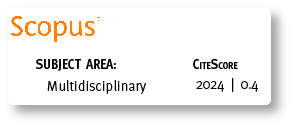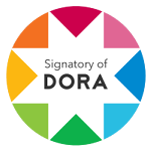Sistema de anotación semiautomático de señales electrocardiográficas de esfuerzo
Abstract
ABSTRACT
Despite the availability of electrocardiographic (ECG) databases does the medical sector not yet possesses an annotated stress database. This paper introduces an annotation system using RR-time series obtained from an eight lead stress database (DICARDIA). First, the system proposes to the user a lead (reference channel) according to its statistical measures. The user then undergoes a visual inspection validating or denying the channel proposed by the system. Afterwards, the system proposes two options based on the quality of the RR-time series. If the series contains few artifacts the annotations are realized using the interval of annotations; in the case of noisy series the system allows annotations beat by beat. The preliminary results realized over 172025 beats (approximately 15% of DICARDIA database) give a sensibility and positive predictive value of 97.66% and 96.71% respectively. The system will permit the delineation of stress databases, which will be an important starting point for evaluating the performance of QRS detectors.
Keywords: ECG, RR, QRS, stress test, annotation.
RESUMEN
A pesar de la cantidad de Bases de datos electrocardiográficas disponibles para la comunidad científica, no existe a disposición una Base de Datos de esfuerzo anotada. En este trabajo se presenta un sistema de anotación utilizando secuencias RR obtenidas de una Base de Datos de Esfuerzo de 8 derivaciones (DICARDIA). Inicialmente el sistema propone al usuario una derivación (canal de referencia) que ha sido evaluada según sus características estadísticas. El usuario realiza una inspección visual y valida o rechaza el canal de referencia. Posteriormente, el sistema propone dos opciones según la calidad de la secuencia RR, en caso de que la secuencia contenga pocos artefactos la anotación se realiza sobre ven- tanas de interés. En el caso de secuencias RR muy ruidosas el sistema permite la anotación latido a latido. Los resultados preliminares realizados sobre 172025 latidos (aproximadamente 15% de DICAR- CIA) reportan una sensibilidad y un valor predictivo positivo de 97.66% y 96.71% respectivamente. Este sistema permitirá anotar Bases de Datos de ECG de esfuerzo, lo cual será un punto de partida importante para evaluar el desempeño de los detectores de QRS.
Palabras clave: ECG, RR, QRS, prueba de esfuerzo, anotación
Downloads
Metrics
References
Armijos, J., D. García, D. Astudillo, K. Palacio-Baus, R. Medina, S. Wong, 2015. Semiautomatic validation of RR time series in an ECG stress test database. In: 11th International Symposium on Medical Information Processing and Analysis (SIPAIM 2015), pp. 968119-968119.
Astudillo, D., K. Palacio-Baus, L. Solano, R. Medina, S. Wong, 2016. Characterizing artifacts in RR stress test time series. In: Engineering in Medicine and Biology Society (EMBC), 2016 38th Annual International Conference of the IEEE (in press).
Dokur, Z., T. Ölmez, 2001. ECG beat classification by a novel hybrid neural network. Computer methods and programs in biomedicine, 66(2), 167-181.
Dumont, J., A.I. Hernandez, G. Carrault, 2010. Improving ECG beats delineation with an evolutionary optimization process. Biomedical Engineering, IEEE Transactions on, 57(3), 607-615.
Goldberger, A.L., L.A. Amaral, L. Glass, J.M. Hausdorff, P.C. Ivanov, R.G. Mark, H.E. Stanley, 2000. Physiobank, physiotoolkit, and physionet components of a new research resource for complex physiologic signals. Circulation, 101(23), e215-e220.
Ledezma, C.A., E. Severeyn, G. Perpinan, M. Altuve, S. Wong, 2014. A new on-line electrocardiographic records database and computer routines for data analysis. In: Engineering in Medicine and Biology Society (EMBC), 2014 36th Annual International Conference of the IEEE, pp. 2738-2741.
Martínez, J.P., R. Almeida, S. Olmos, A.P. Rocha, P. Laguna, 2004. A wavelet-based ECG delineator: evaluation on standard databases. Biomedical Engineering, IEEE Transactions on, 51(4), 570-581.
Moody, G.B., R.G. Mark, 1990. The MIT-BIH arrhythmia database on CD-ROM and software for use with it. In: Computers in Cardiology 1990, Proceedings IEEE, pp. 185-188.
Pan, J., W.J. Tompkins, 1985. A real-time QRS detection algorithm. Biomedical Engineering, IEEE Transactions on, (3), 230-236.
Quintero, L., S. Wong, R. Parra, J. Cruz, N. Antepara, D. Almeida, G. Passariello, 2007. Stress ECG and laboratory database for the assessment of diabetic cardiovascular autonomic neuropathy. In: Engineering in Medicine and Biology Society, 2007. EMBS 2007. 29th Annual International Conference of the IEEE, pp. 4339-4342.
Romero, D., N. Behard, A. Martin-Yebra, J.P. Martinez, P. Laguna, E. Pueyo, A. Hernández, 2014. Analysis of QRS alterations during stress test recordings on patients with brugada syndrome. In: Computing in Cardiology Conference (CinC), IEEE, pp. 137-140.
Downloads
Published
How to Cite
Issue
Section
License
Copyright © Autors. Creative Commons Attribution 4.0 License. for any article submitted from 6 June 2017 onwards. For manuscripts submitted before, the CC BY 3.0 License was used.
![]()
You are free to:
 |
Share — copy and redistribute the material in any medium or format |
 |
Adapt — remix, transform, and build upon the material for any purpose, even commercially. |
Under the following conditions:
 |
Attribution — You must give appropriate credit, provide a link to the licence, and indicate if changes were made. You may do so in any reasonable manner, but not in any way that suggests the licenser endorses you or your use. |
| No additional restrictions — You may not apply legal terms or technological measures that legally restrict others from doing anything the licence permits. |









